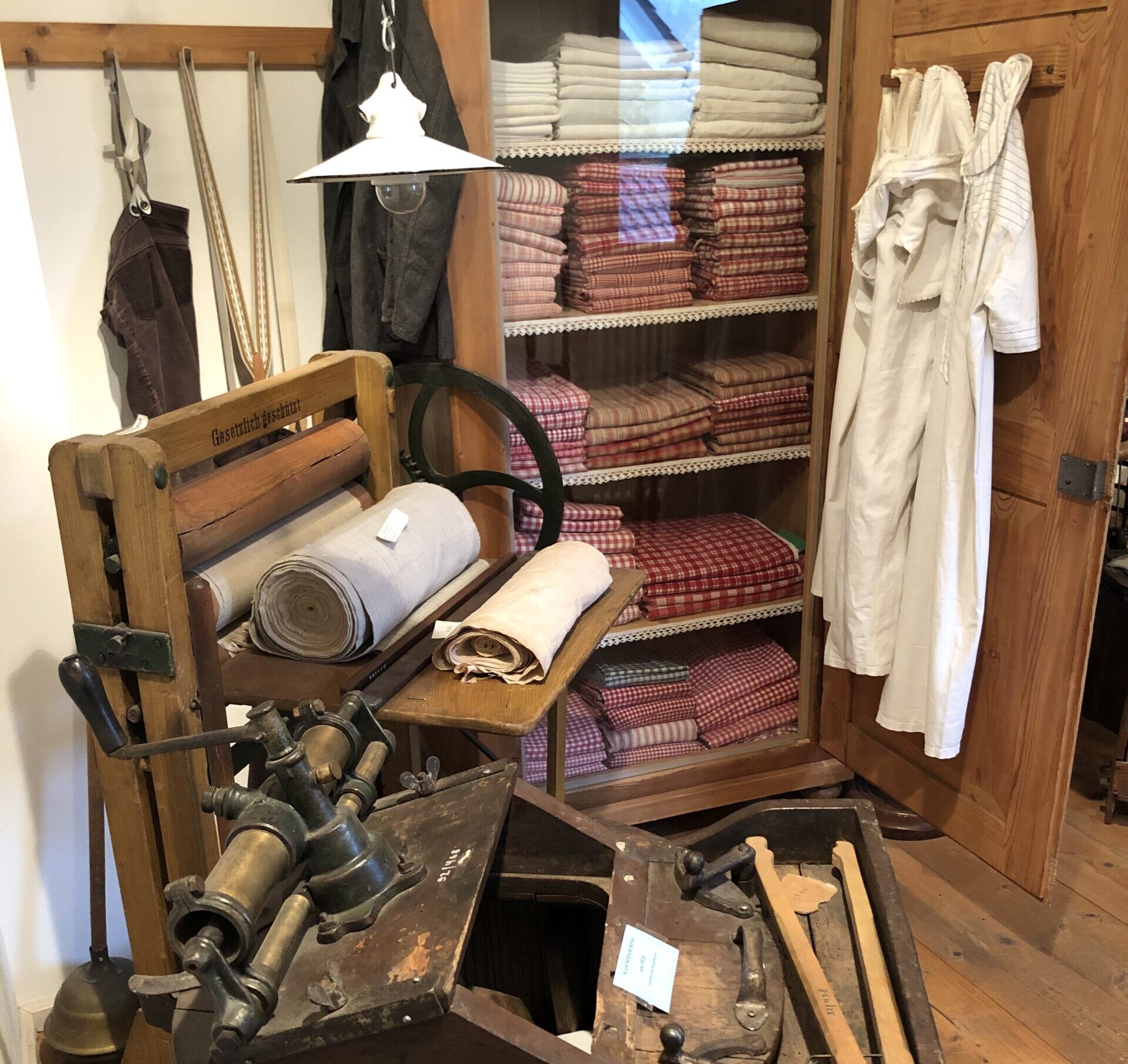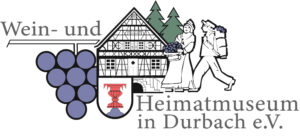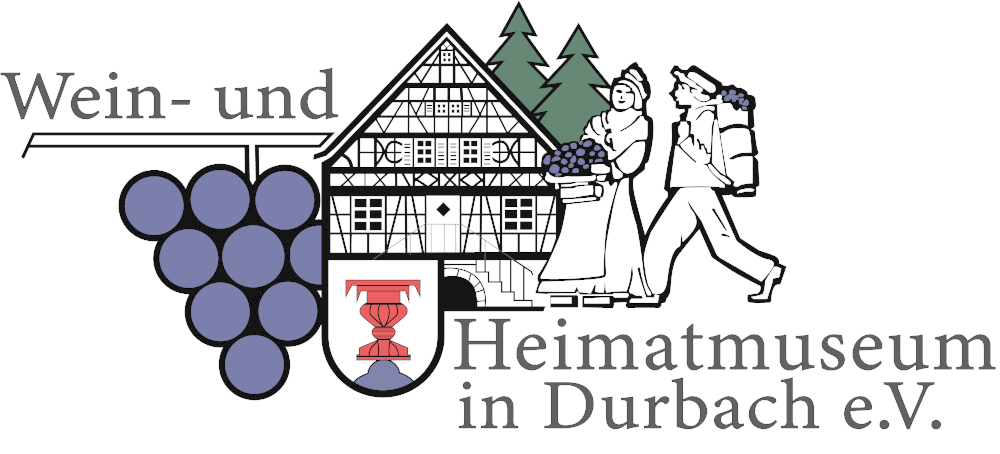250 Utility room

This utility room contains interesting equipment from the early days of domestic automation. In addition, one can see how by-products of the local cigar factory found useful further use in the household. …
There is a butter churn here. The milk was skimmed with a milk centrifuge, which used to be laborious manual work.
The wooden washing machine dates from the 1920s. It was connected to a water hose and then rotated by itself. The laundry mangle was also an extremely helpful acquisition. There are two cubits on the mangle.
There is a lot of woven linen cloth made in Durbach in the room. Many weaver families were predominantly resident in the Unterweiler district. There was also a dye works in Durbach, the Plank dye works was located in the buildings of the present Spinner butcher’s shop in the centre of the village. Models were used for blue printing, some of which can be seen in the display case with printing models on the staircase on the ground floor.
Not every household had a sewing machine in the 19th century. The seamstresses came into the house and carried the sewing machine from yard to yard with a head ring. Various irons can also be seen here.
In the display case, from the top left, various beautifully knitted linen traditional shirts for the Durbach costume can be seen. The sewing kit comes from the traditional costume cap maker Serrer from Unterweiler. The head is already around 200 years old and has been passed down in the family. Woolen winter costume caps were made, like those still worn by the three women in the picture.
The spinning wheel was used to spin hemp and flax, which was also grown in Durbach. Hemp and flax were spun in the wintertime and then wound onto wooden reels as shown. The processing of hemp and flax from the plant to the spinning wheel also took place in Durbach. A hemp bed, i.e. an area of water in which the hemp plants were soaked, was present in Unterweiler near the Weilermühle. The hemp crushers can be viewed on the Trippel in the Shed. There is a small wooden device for making small hemp ropes and cords.
In the showcase below are various tools from the Durbach cigar factory. from approx. 1920 to 1970 on display. Tobacco was not planted in Durbach, but the municipality was keen to create jobs and therefore made the land available for the construction of the “factory” of the Geiger company from Oberweiler. The “factory” was previously housed in the hall of the “Scharf-Eck” inn. In many cases, the cigars were also made at home. A well-known Durbach cigar brand was called “Maria-Luise”. Later, a clothing company used the buildings at the cemetery, which had to make way for apartment buildings in the meantime.
The cigar boxes were reused in many ways, for example to make the jewellery box shown here. The pictures on the wall, the frames of which are carved out of cigar boxes, show former mayor Glanzmann with his bride at the wedding reception.
The pine chip holder with pine chips made of resin-rich pine wood on the ceiling was used as a substitute for the expensive wax candles or oil lamps. It yielded only a dim light. The pine shaving plane for making the pine shavings is at the cupboard. In the pre-electric era in Durbach, light was alternatively produced with the linseed oil lamp, which can also be seen here.
Finally, there is the image of palm bearers at the end of the 1920s.

